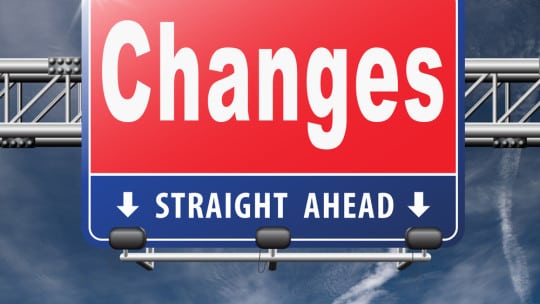
In business, change is a constant, some years more than others. Beginning with the power shift in the White House, it looks like we’re in for an era of dramatic change. 41% of CEOs expect significant change within their company over the next three years. How they navigate those changes could touch employee retention, corporate reputation and ultimately influence revenue, profits and other measures of financial strength. Effective change management is a critical success factor for business leaders, especially communicators who often are involved with change programs. Yet, most communicators and CEOs lack a deep enough understanding of change management.
This article and others that will follow will provide the essentials of change management for the PR pro. They will offer tips to bolster leadership potential and make you invaluable to your organization and brand during the trauma of change.
In my experience, communication and engagement are the conduits to effectively navigating the steps to change. It’s unrealistic to expect people to buy in to, or execute, the tactics of a change plan if they are not involved, if their opinions are not included and their concerns and feelings are not addressed. I have seen many operationally sound, expensive change initiatives fail because the plans lacked attention to engagement.
Based on theoretical knowledge and real-life professional experience, I created a path to change, with engagement and communication at its core. Broadly, the steps are: grasp (clearly define what is changing, why it’s changing, the timeframe, the desired future state and who it impacts), know (understand the emotions, blocks, potential pitfalls of the human side of the change), launch (create and communicate an effective change plan based on the knowledge you’ve gained in the first steps), move (implement the plan), and sustain (live in your new normal while measuring the impact of the change and adapting as necessary).
Change Essentials Step 1: Defining Change
The first step in effective change management is to define your change. Communicators can jump right in, at the beginning of change planning, to help. A clear definition of change is essential for all stakeholders to understand the change, and to gain their buy-in. A good change definition is specific, articulating what is changing (the current state), what it’s changing into (the future state), why it’s changing , when it’s changing, and who it will impact.
The change definition should be compelling and audience-focused. If the change is internal (e.g. a new flexible work hours program), address employees. When the change is external (e.g. the company is being sold), alert company leaders and employees first, then external audiences such as customers and clients.
In your definition, paint a bright picture of the new, changed future state. Describe how you expect the change to contribute to quality of life, drive up sales, reduce workload and costs, or contribute to financial efficiencies that could mean bigger bonuses and benefit the people impacted. Use clear, simple language (not jargon). Be inspirational in tone, linking the change to organizational mission and values.
That said, guard against over-promising – not all changes dramatically improve lives or turn companies around completely. Partner with your legal teams to be certain the extrinsic and inherent future you describe is realistic and compliant.
So how to precisely define what is changing? It’s not enough to say “we have a new CEO,” or “our company was acquired,” or “we are instituting flexible work hours.” Include the who, what, where, when and how for a complete and clear change definition. Here’s an example:
To provide more options for our employees and in keeping with our mission to care for the environment, we are instituting a flexible work hours program for all employees in all business divisions and locations. In a rolling launch, the program will begin first at x, y, and z, locations immediately, with the remaining locations adopting the program one per month until all locations are on board by December 31. We expect employees to benefit from better work-life balance, reduce our environmental footprint and improve productivity through fewer commuting hours. The daily experience of our employees is our highest concern and we believe this new program will significantly contribute to greater well-being, which will translate into higher morale.
Defining your change is a strong beginning and sets the tone for the rest of the change process. The next steps you will need include crafting your change strategy; picking communication content and channels; choosing spokespersons and message platform(s); and other engagement elements. Watch for guidance on these steps in upcoming articles.
Jaya Koilpillai Bohlmann's new book is This Changes Everything: Transforming Your Life from the Inside Out. Follow her at: @jayabohlmann
